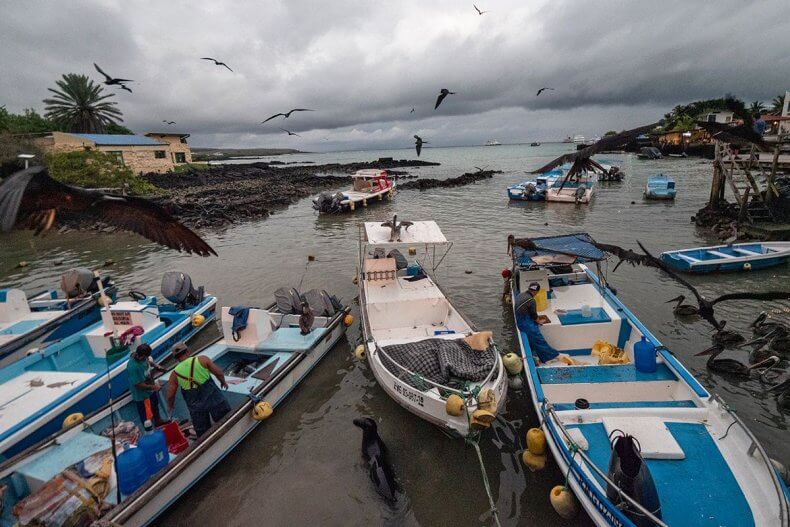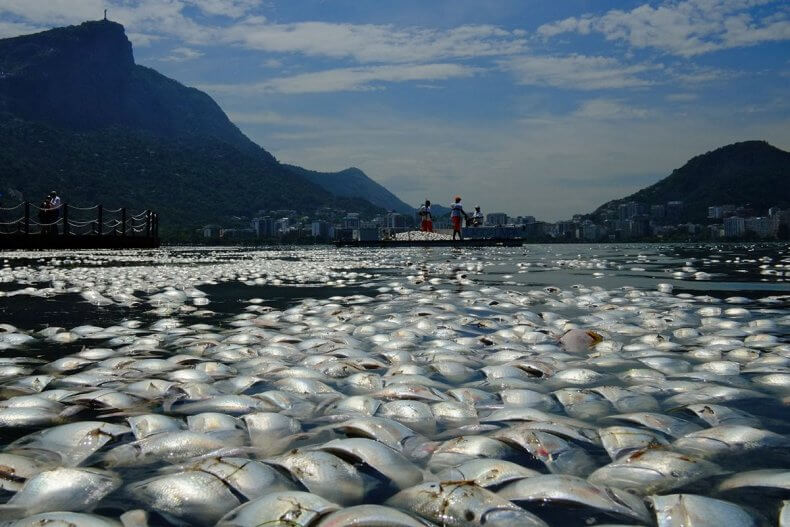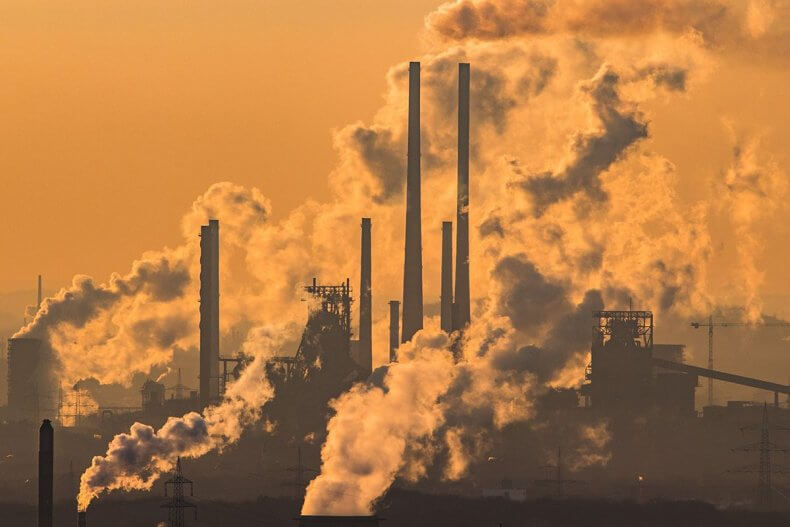For the first time, the UN’s World Wildlife Day is highlighting threats to marine life. The theme of World Wildlife Day 2019, which takes place on March 3, is ‘Life below water: for people and planet’.
The title is a nod to the UN’s Sustainable Development Goal 14 – Life below water, which focuses on protecting marine species.
“Oceans regulate our climate, produce half the oxygen we breathe, provide nourishment for [more than] 3 billion people, and absorb 30 percent of carbon dioxide released into the atmosphere and fully 90 percent of the heat from climate change,” said Abdoulaye Mar Dieye, UN Assistant Secretary-General, in November when the theme was announced.
UN World Wildlife Day was established in 2013, with the first event taking place in 2015. Its mission is to “celebrate and raise awareness of the world’s wild fauna and flora.” Activities, film screenings and art contests are taking place across the world to draw attention to this year’s theme, including an event at UN Headquarters in New York.
Oceans cover 71 percent of the Earth’s surface and make up more than 99 percent of the planet’s livable habitat, but scientists say they’re in serious trouble. The first systematic analysis of marine wilderness, published in the journal Current Biology in 2018, found that the ocean has been extensively altered due to human activity, with only 13 percent left undisturbed.
The news followed the revelation that over half the world’s oceans are being industrially fished. A 2018 study, published in the journal Science, found that commercial fishing covered a bigger area than global agriculture.
This massive disruption to ocean ecosystems can be caused by such diverse threats as overfishing, agricultural chemical offspill and global warming driving up sea temperatures. While threats to rainforests and other land environments have long been known, public awareness about the precarious state of the ocean are a more recent revelation, thanks in part to cultural phenomena like the BBC’s Blue Planet series.
From coral bleaching to acidification, Newsweek discusses 15 of the biggest threats facing the oceans today—as well as what we can do about them.
Climate change
The ocean has absorbed 80 percent of human-produced carbon dioxide. These warmer waters impact almost every aspect of ocean welfare, from coral bleaching to fish migration patterns and even alter oceanic currents. Warming causes chaos within marine life, which takes biological cues from temperatures to know when to spawn.
What you can do: While minding your carbon footprint can help, big changes need to happen on a government level for this huge issue to change. Support local politicians who advocate for laws that protect the environment. The Sustainable Politician Project helps explain the eco-friendly credentials (or lack thereof) of each state representative.

Plastic pollution
Greenpeace estimates that 12.7 million tonnes of plastic ends up in the sea every year. Plastic garbage, like bottles and bags, is often mistaken for food by sea creatures and eaten. This can block the airways of the animal or even strangle them. Plastic is toxic for these animals, clogging their stomachs so they can’t ingest real food. And it’s not just coastal areas that are affected—even in the 6.8-mile-deep Mariana Trench, a recent study found all marine life had plastic in their guts.
What you can do: It’s not easy to cut unnecessary plastic from our lives—but it’s by no means impossible. Supermarkets are big sinners when it comes to excess plastic waste, so try and only buy vegetables and fruit which are sold loose, and bring your own reusable bag. Invest in a canteen so you don’t have to waste plastic (and money) on bottled water. Try and spend a week noticing what unnecessary plastic you consume without thinking, like drinking straws and disposable razors.

Unsustainable fishing
The WWF says over 30 percent of the world’s fisheries have become depleted thanks to overfishing. Some fish, like the Atlantic bluefin tuna, have been hunted so heavily they are now an endangered species. Although regulations are in place to try and curb depletion, illegal fishing is still a big problem.
What you can do: The Marine Stewardship Council (MSC) works with fisheries to make consumers aware which fish are sustainable. By purchasing MSC-certified seafood products, consumers help support ethical fishing practices. Luckily, MSC labels have become mainstream—even McDonald’s offers 100 percent MSC-certified whitefish products.

Tourism and development
Everyone loves a beach—but unregulated growth of seaside tourism can seriously harm the ocean. Infrastructure like roads and buildings replace natural habitats, and the influx of people produces more waste and pollution. Coral reefs from Hong Kong to Honolulu have all been destroyed thanks to coastal development.
What you can do: Travelling locally might not be super glamorous, but it’s often cheaper and teaches you about your own area—and it’s much less polluting. If you want to go further afield, The International Ecotourism Society can point you in the direction of some holidays that won’t hurt the planet.

Shipping
Commercial ships pose a number of threats to marine life. They often leak oil and chemicals, dump waste and pollute the air through emissions of sulfur dioxide, nitrogen oxides and carbon dioxide. They’re also known to smash into whales and other marine mammals.
What you can do: Buy locally! Although it can be hard to resist the lure of cheap overseas trinkets stocked on Amazon, pause before you’re seduced by a low price. It’s likely someone else is footing the bill, whether it’s an underpaid laborer or a creature hit by a boat on an unnecessary journey. Try to buy locally-grown, native seasonal food produce when you can.

Inadequate protection
Some 5.7 percent of the world’s oceans has been designated as protected, but that doesn’t mean they’re free from environmental risk factors. Of these Marine Protected Areas (MPAs), the WWF says 90 percent are open to fishing, and almost all are open to tourism. Very few have dedicated management to ensure that the local ecosystems are remaining healthy.
What you can do: This is mainly a government issue. But individuals can find their local MPA and petition the appropriate representative to make MPA investment and management a priority.

Oil and gas
Large reserves of gas and oil are still located under the sea bed. But drilling and prospecting can damage the local marine environment, and many companies don’t adequately address environmental concerns, sometimes leading to disastrous oil spills. As resources become scarce, companies are moving out into increasingly remote areas, some of which have little environmental protection.
What you can do: Be mindful about your gas usage—make an effort to use public transport and avoid long-haul flights. Using as much renewable energy as possible supports the environmentally-friendly, sustainable energy industry.

Coastal pollution
Industrial agriculture uses a vast amount of chemicals, like nitrogen and phosphorus, much of which washes into rivers and eventually makes its way into the sea. These chemical overloads lead to ocean dead zones, in which oxygen levels plummet and all life either dies or migrates away. The East Coast, the Gulf of Mexico and the Great Lakes have all seen ocean dead zones occur. Since 1950, dead zones with zero oxygen have quadrupled in size.
What you can do: Again, this is a government issue. Dead zones can be re-nourished with better farming practices and sewage systems. However, coastal dead zones are not a priority for governments around the world. Voting and advocating for politicians who take the issue seriously can help.

Acidification
Carbon dioxide dissolves in oceans to form carbonic acid. Increasing the acid levels stops marine-calcifying creatures from forming shells and disrupts their mating process. Fish also find it harder to detect predators in acidic water. Acidification is changing the sea’s chemistry—over the past 200 years, the ocean has become 30 percent more acidic.
What you can do: Carbon emissions are behind acidification, so changing small daily habits, like cycling to work or turning off unused lights, is a start. Use this carbon footprint calculator to check where you can cut down.

Human rights abuses at sea
It’s not just marine creatures that are suffering out at sea. As resources become more scarce, the unregulated fishing industry is becoming more cut-throat. Laborers are regularly working on fishing vessels for inhumane hours for no pay—Southeast Asia has become a hotspot for these trafficked workers. This is terrible in itself, but these rogue fishing companies are also unlikely to be paying any attention to environmental protection laws and are often overfishing to boot.
What you can do: It’s tricky to work out where supermarket fish comes from. The Monterey Bay Aquarium’s Seafood Watch program has a Seafood Slavery Risk Tool to help inform consumers and businesses.

Commercial whaling
Commercial whaling was such a problem in the 20th century that whale populations plummeted—the blue whales of the Antarctic were almost exterminated entirely. However, a worldwide ban on commercial whaling in 1986—honored by all but three countries—is helping whale populations recover, although a 2017 Australian study found they won’t have recovered to even half of their pre-whaling numbers by 2100. Japan, Iceland, and Norway all continue whaling, with some fleets killing hundreds of whales every year.
What you can do: Not much, unless you live in Japan, Iceland, or Norway. But you can support charities like Whale & Dolphin Conservation USA.

Deep-sea mining
It’s not just oil and gas that is hunted for under the seas. As technology advances, new demand for precious minerals increases. Manganese nodules, which are found in rocks on the seafloor, produce industrial metal alloys like stainless steel. Cobalt, nickel, thallium and also found buried in the seabeds, which often nurture diverse ecosystems. Companies are setting up mining operations that can potentially disrupt delicate sealife by scraping the ocean floor.
What you can do: These precious minerals are often used in things like smartphones and, ironically, green technologies like solar panels. Instead of rushing to buy the newest technology, hang on to your existing phone, and repair it if it breaks instead of throwing it away.


Noise pollution
Whales and dolphins communicate and hunt using sonic signals. But this process is being disrupted by the noise of the sea industry, from shipping to the gas industry to military sonar. This noise pollution has lead female whales to miss the sound of singing males whales, causing lost mating opportunities, and has even caused whale strandings. Noise produces constant, low-level stress in sea creatures, which has unknown long-term effects.
What you can do: Raise awareness of this lesser-known issue. “Scientists know we have a noise problem,” marine scientist Christopher Clark told Yale Environment 360 in 2016. “We need to get this into the press, we need to go to town hall meetings and let people know what is happening out there so that we can get meaningful political action to address this.”

Melting ice caps
Rising temperatures have caused Arctic and Antarctic ice caps to melt. This threatened Arctic ecosystems, making polar bears homeless and driving away Antarctic krill and the many animals that feed on them. It also impacts the production of ice-dependent algae, which feeds Arctic cod.
What you can do: A 2016 study the journal Science found that for every ton of carbon dioxide emitted, around 32 square feet of ice disappears. Cutting your own carbon footprint, and supporting green politicians, are small steps towards helping the ice cap destruction.

Coral reef degradation
The WWF says that if the sea warms at its current rate, they will become too warm for coral reefs by 2050. Coral reefs are already in bad shape thanks to overfishing of the species that keep the reefs free of algae, as well as coral bleaching which is already occurring from overheating. Two-thirds of Australia’s famous Great Barrier Reef has already been destroyed by bleaching.
What you can do: Former Special Forces soldiers can join the Force Blue project, which transplants endangered coral into new homes. But the only sustainable solution is to reduce global carbon emissions to stop the warmer temperatures from bleaching the coral.
SOURCE: NEWSWEEK – https://www.newsweek.com/world-wildlife-day-2019-o...

